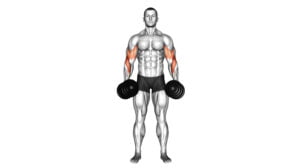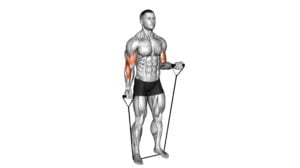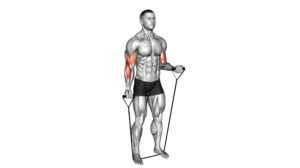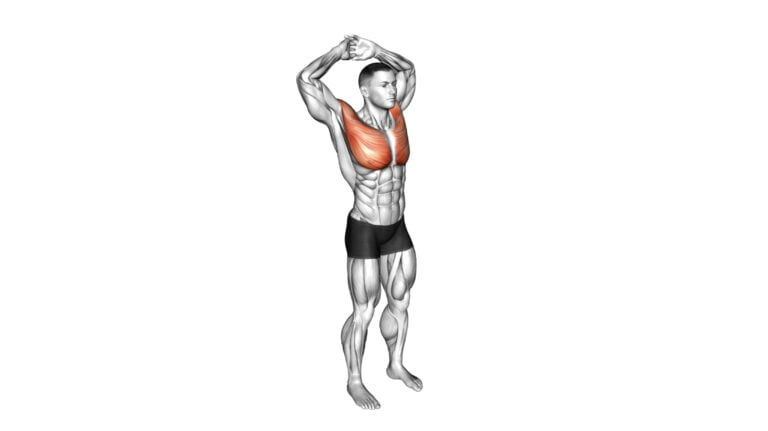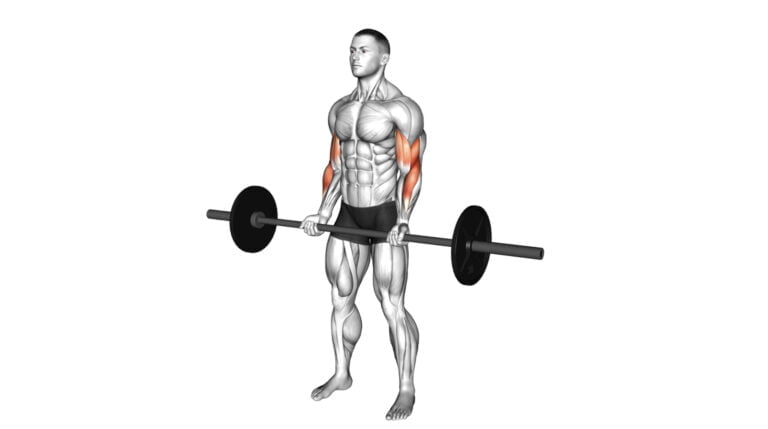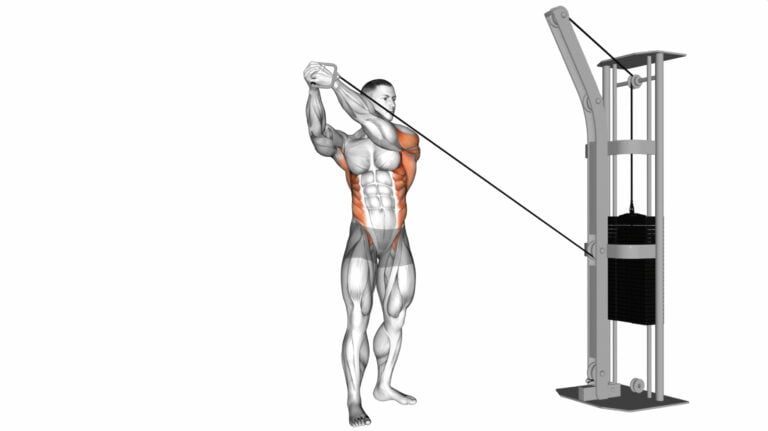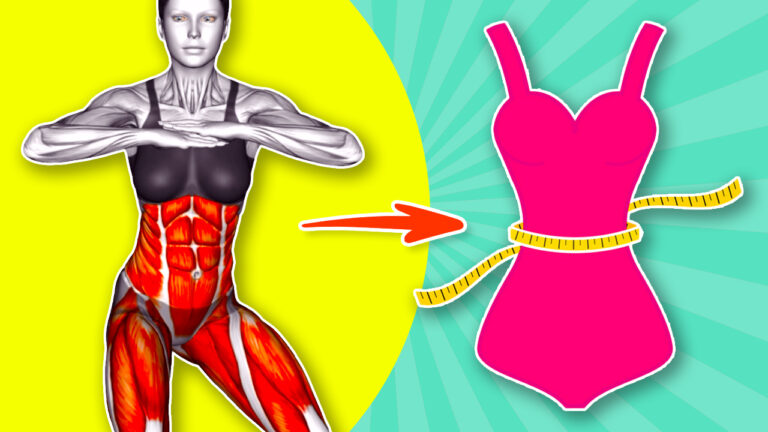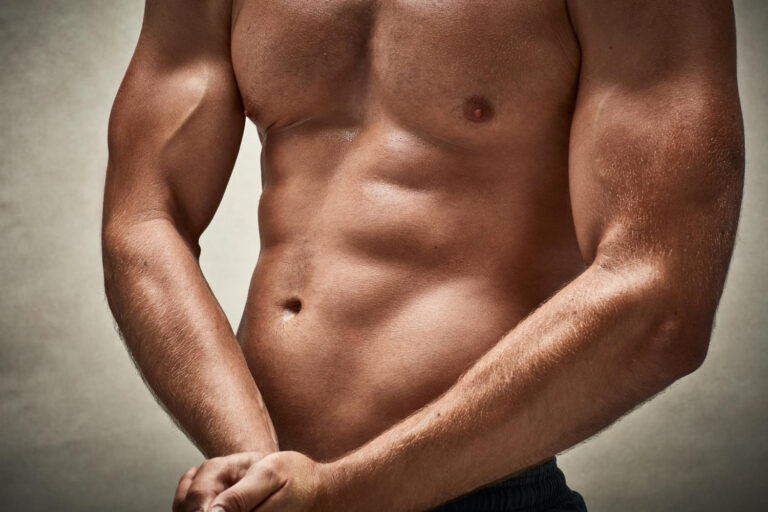10 Best Exercises For Bicep Peak: Get Massive Arms Now!
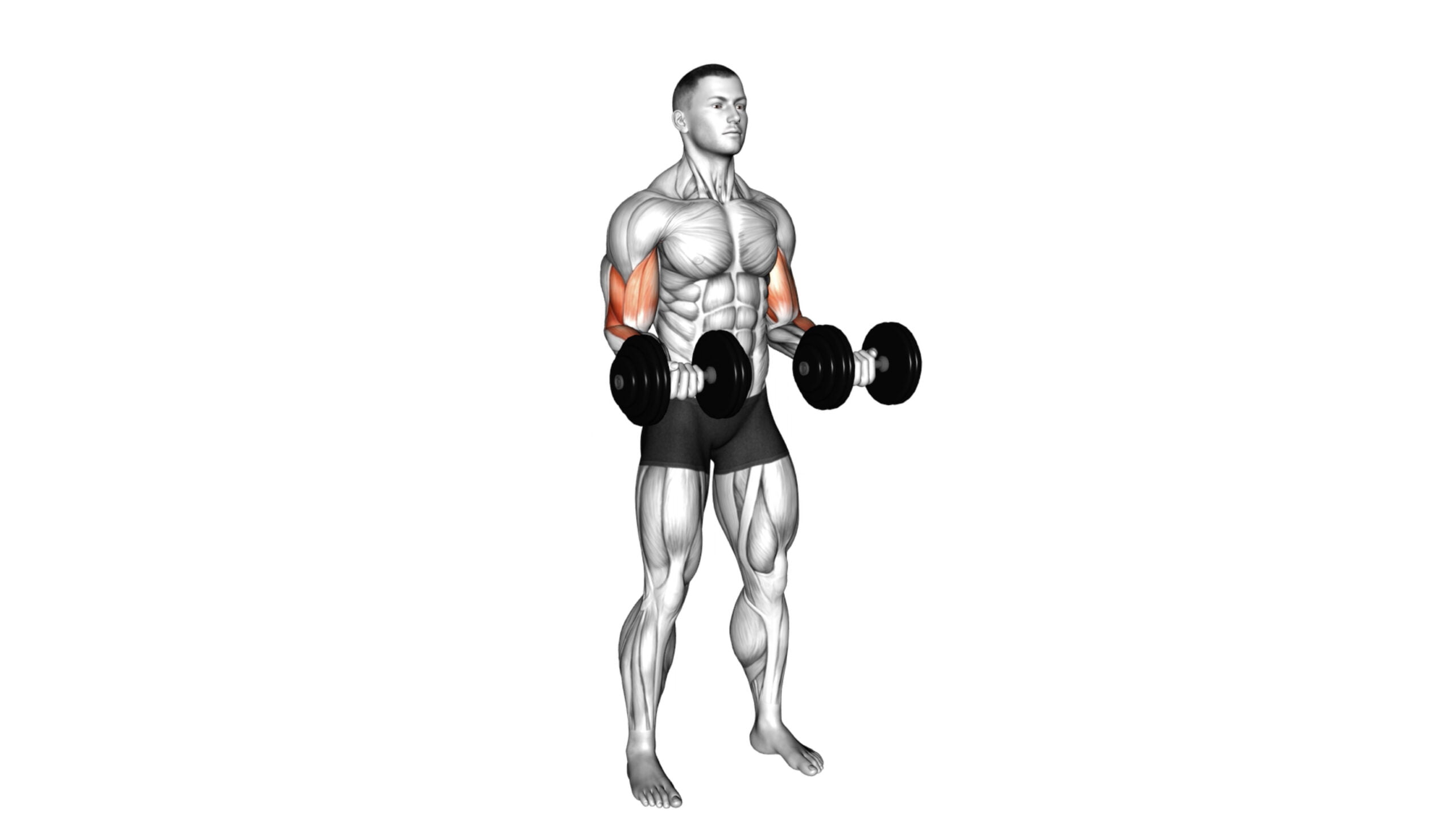
Achieving the perfect bicep peak is a goal many gym-goers strive for, but it’s often shrouded in mystery and misinformation. As a fitness expert with years of experience sculpting impressive arms, I’m here to clear up the confusion and guide you towards your best muscle growth yet.
Building a towering bicep peak isn’t just about doing endless curls; it’s about understanding your muscles and applying targeted techniques to maximize hypertrophy.
In this blog post, we’re exploring the Best Exercises For Bicep Peak that have been proven to give those peaks the push they need. And here’s an interesting fact: The shape of your bicep peak is heavily influenced by genetics, but with the right exercises, everyone can see significant improvement.
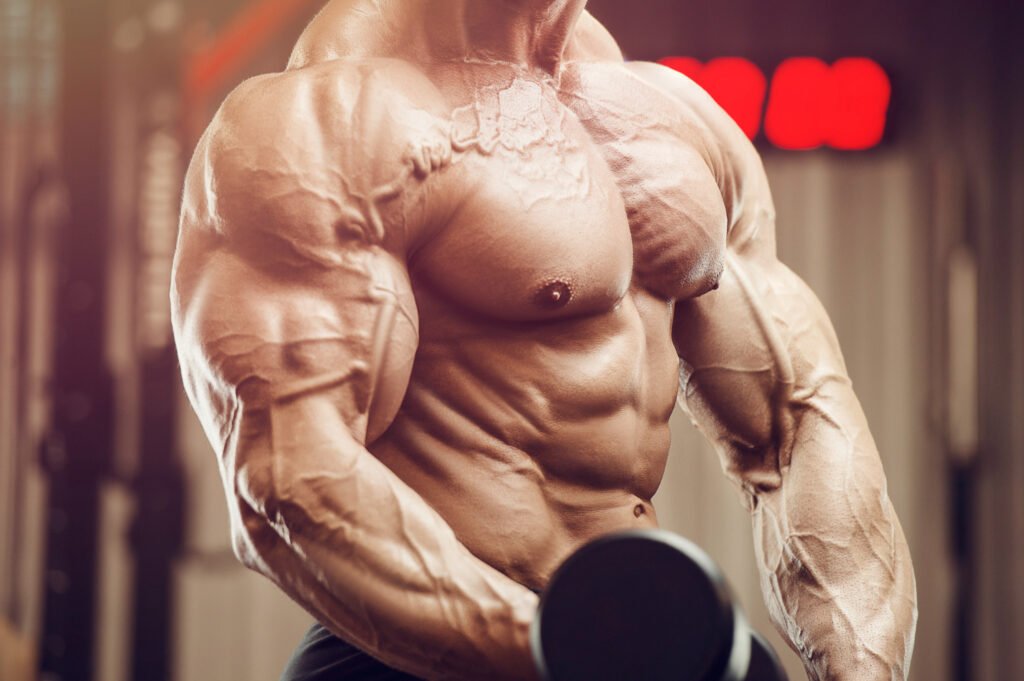
Ready to transform your arms? Read on!
Key Takeaways
- Choosing exercises that target both the short and long head of the biceps, like dumbbell curls and preacher curls, is key for building a pronounced bicep peak.
- Incorporating variations in grip width during exercises can isolate the biceps better and contribute significantly to peak development.
- To maximize bicep growth, focusing on proper form, such as full range of motion and wrist supination during curls, ensures all muscle fibers are engaged effectively.
- Strengthening the brachialis with specific exercises like hammer curls adds mass to upper arms and supports overall peak growth.
- Adhering to recommended sets and reps for each exercise in your routine helps stimulate hypertrophy best suited for achieving notable bicep peaks.
Understanding Bicep Muscles

Understanding Bicep Muscles: The bicep muscles are composed of two main parts, the short head and the long head, which work together to flex the elbow. Building a well-defined bicep peak requires targeted exercises that engage both heads to achieve optimal growth.
Overview of bicep anatomy
The bicep muscle, located at the front of the upper arm, consists of two main parts: the long head and the short head. These parts work together to help move the forearm, allowing you to perform actions like lifting and pulling.
Beyond just movement, they play a crucial role in giving your arms their shape and definition. The bicep attaches to bones in the shoulder and elbow through tendons, making it essential for joint mobility.
Building strength in this muscle involves exercises that target both heads of the biceps brachii. Moves such as bicep curls with dumbbells or barbells effectively engage these muscles.
Incorporating variations like hammer curls and supinated grip exercises can further isolate and build each part of the bicep for balanced growth. Proper technique emphasizes full range of motion and correct form to maximize gains while minimizing injury risk.
The importance of building a bicep peak
Building a bicep peak isn’t just about boosting physical appearance; it significantly enhances upper body strength. A well-defined bicep peak improves the overall function of the arm, making activities like lifting heavier weights more manageable.
This development is crucial for athletes and anyone involved in regular physical activity, as it supports better performance.
Exercises such as dumbbell curls, preacher curls, and barbell curls are key to targeting this muscle area effectively. They focus on the biceps brachii, which is essential for achieving that sought-after peak.
By incorporating these exercises into your routine, you also ensure balanced muscle growth around the shoulder joint and elbow, contributing to a more stable and powerful upper body.
Tips for Achieving Bicep Peak Growth
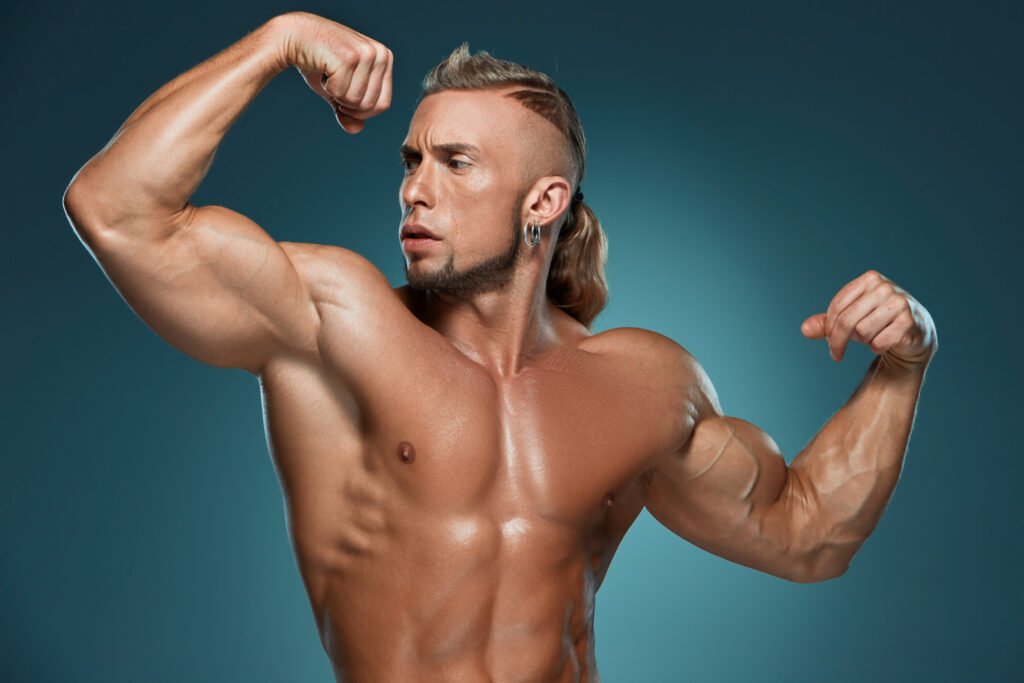
To achieve bicep peak growth, choose exercises that target the biceps brachii and brachialis muscles. Use a proper grip width and focus on supinating your wrist during bicep exercises.
Proper exercise selection
Choosing the right exercises is crucial for bicep peak growth. Focus on movements that target the biceps brachii, especially those that involve supination and flexion of the elbow.
Dumbbell curls, cable curls, and chin-ups are excellent options. These exercises activate the muscle fibers responsible for adding height to your bicep peak. Make sure to incorporate both heavy weights for lower reps and lighter weights for higher reps to stimulate different types of muscle growth.
Next, consider your grip width during these exercises. Adjusting how close or far apart your hands are can further isolate the biceps and enhance peak development. Pay attention to using a full range of motion; it ensures that every fiber in your biceps is engaged throughout each exercise.
Moving on, let’s talk about proper grip width and range of motion in more detail.
Proper grip width and range of motion
Select a grip width that is slightly wider than shoulder-width apart for bicep exercises. This allows for maximum muscle activation and reduces strain on the wrists and elbows. When performing curls, maintain a full range of motion by extending your arms completely at the bottom of the movement and fully contracting your biceps at the top.
This ensures optimal muscle engagement throughout the exercise.
By focusing on proper grip width and maximizing range of motion, you can effectively target your biceps and achieve peak growth.
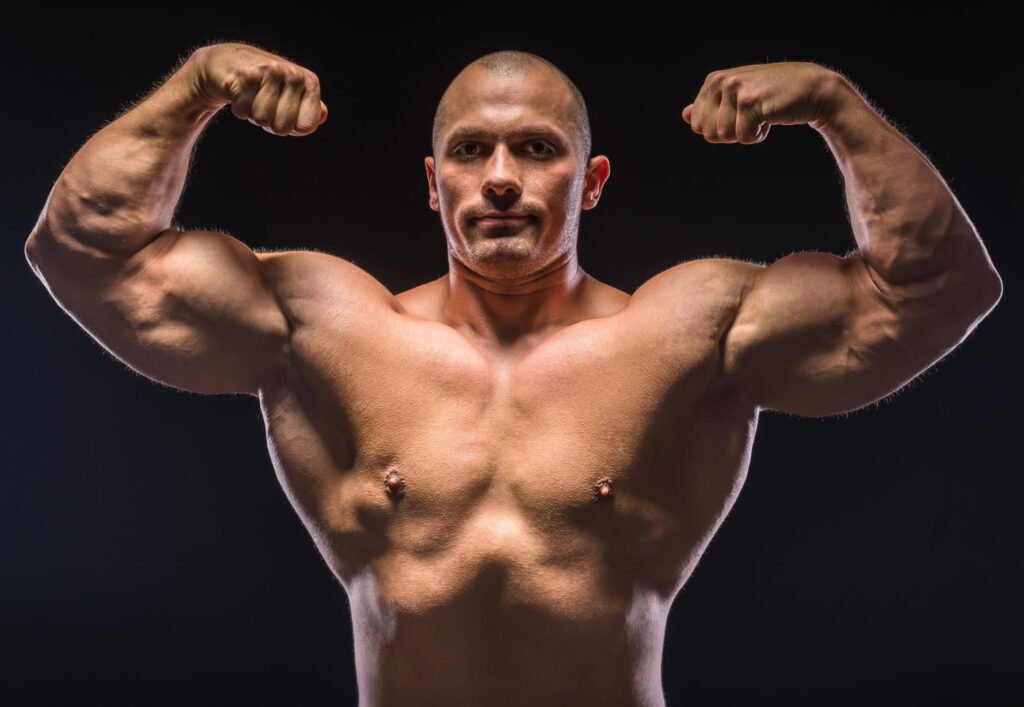
Supination of the wrist
To achieve optimal bicep peak growth, it’s essential to understand the role of supination in wrist movement. Supination involves turning the palm upward, a motion that is crucial during bicep exercises such as curls.
This action maximizes bicep engagement and contributes to a fuller contraction of the muscle fibers, leading to increased overall development and definition of the biceps. By emphasizing supination during exercises like dumbbell curls or cable curls, individuals can effectively target and activate their biceps for enhanced peak growth.
Engaging in exercises that specifically incorporate supination helps fully engage and develop the bicep muscles. The rotation at the wrist encourages better isolation of these muscles, contributing to more significant gains over time with consistent training efforts.
Strengthening the brachialis
To strengthen the brachialis, opt for exercises that involve a neutral grip or hammer grip. Dumbbell hammer curls and cable hammer curls are effective for targeting this muscle. These movements help to add mass to your upper arms and contribute to overall bicep peak development.
Furthermore, incorporating reverse curls into your workout routine can also aid in strengthening the brachialis. This exercise involves holding a bar with an overhand grip and curling it upwards, targeting not only the brachialis but also engaging the forearm muscles for balanced arm development.
Top 10 Best Exercises For Bicep Peak
Get ready to achieve your goals with the Best Exercises for Bicep Peak. Keep reading to discover the top exercises for building those impressive peak biceps!
1. Dumbbell 21s
Dumbbell 21s involve curling a dumbbell for seven half-reps from the bottom to the midpoint, then another seven half-reps from the midpoint to the top. Finally, complete seven full-range curls.
This exercise targets different points in the bicep’s range of motion, promoting muscle growth and strength. Dumbbell 21s can be incorporated into your arm workout routine for optimal bicep peak development.
Moving on to – 2. Dumbbell Alternate Hammer Strict Curl..
2. Dumbbell Alternate Hammer Strict Curl
Transitioning from the Dumbbell 21s to the Dumbbell Alternate Hammer Strict Curl, this exercise targets both biceps and forearms simultaneously. Stand with feet shoulder-width apart and hold a dumbbell in each hand.
With palms facing inward and elbows close to the body, curl one arm at a time while keeping the other arm stationary. Ensure controlled movement throughout the exercise to maximize bicep engagement.
While performing the Dumbbell Alternate Hammer Strict Curl, focus on maintaining proper form and avoiding momentum to fully isolate the biceps and forearms. This exercise helps in building overall upper arm strength by emphasizing stability and control during each repetition.
3. Dumbbell Cross Body Hammer Curl
The dumbbell cross body hammer curl is an effective exercise for targeting the brachialis and biceps brachii muscles. To perform this exercise, stand with a dumbbell in each hand, palms facing your sides.
Keeping your elbows close to your torso, lift one dumbbell across your body towards the opposite shoulder while maintaining a neutral grip. Lower the weight gradually and repeat on the other side.
Engaging in the dumbbell cross body hammer curl helps build bicep peak growth by maximizing activation of the brachialis muscle, resulting in enhanced overall arm definition and strength.
Incorporating this exercise into your workout routine can contribute to well-rounded bicep development.
4. Dumbbell High Curl
The dumbbell high curl is an effective exercise for targeting the bicep peak. To perform this exercise, stand with your feet shoulder-width apart and hold a dumbbell in each hand. Keep your elbows close to your body and curl the dumbbells up towards your shoulders, focusing on squeezing the biceps at the top of the movement.
Lower the dumbbells back down in a slow and controlled manner to complete one repetition.
By incorporating the dumbbell high curl into your workout routine, you can effectively isolate and target the bicep muscles to promote growth and development. This exercise also helps improve strength and definition in the upper arms, making it a valuable addition to any bicep-focused workout program.
5. Cable Biceps Curl (SZ-bar)
The SZ-bar cable biceps curl is an effective exercise for targeting the bicep muscles. With a firm grip on the SZ-bar, pull the bar towards your shoulders while keeping your elbows close to your body.
This movement helps isolate and fully engage the bicep muscles, promoting growth and strength. The cable setup offers consistent resistance throughout the entire range of motion, maximizing muscle activation for optimal results.
Now let’s move on to the next exercise in our list: “6. Cable Close Grip Curl.”.
6. Cable Close Grip Curl
Transitioning from the SZ-bar cable biceps curl, the cable close grip curl is an effective exercise for targeting the lower portion of the bicep muscle. To perform this exercise, grab a straight bar handle with your palms facing upwards and take a narrower grip than usual.
Keep your elbows close to your sides as you curl the bar towards your shoulders, ensuring that you contract and squeeze your biceps at the top of the movement. This exercise provides constant tension on the biceps throughout each repetition, helping to enhance muscle activation and growth in this specific area.
Executing cable close grip curls can also help in developing overall arm strength by engaging muscles more intensely compared to other similar exercises. It’s essential to maintain proper form and control throughout each repetition to maximize its effectiveness while reducing unnecessary strain on other muscles or joints.
7. Cable One Arm Inner Biceps Curl
The Cable One Arm Inner Biceps Curl targets the inner head of the biceps, helping to build definition and size. To perform this exercise, stand with your feet shoulder-width apart and grasp the handle attached to a low pulley with an underhand grip.
Keeping your upper arm stationary, curl the handle towards your shoulder while contracting your biceps. Slowly lower the weight back down to complete one repetition. This exercise effectively isolates the bicep muscle and allows for a greater range of motion compared to traditional dumbbell curls.
By incorporating the Cable One Arm Inner Biceps Curl into your workout routine, you can effectively develop both strength and size in your biceps while targeting specific areas for growth.
8. Barbell Curl
The barbell curl is a fundamental bicep exercise that targets the brachialis and biceps brachii muscles. Holding a barbell with an underhand grip, pull the weight up towards your chest while keeping your upper arms stationary.
This movement effectively strengthens the biceps and helps in achieving peak growth. It is essential to maintain proper form throughout the exercise to avoid strain or injury.
Becoming proficient in performing barbell curls can significantly contribute to developing well-defined bicep peaks when integrated into a comprehensive workout routine. By incorporating this compound movement along with other targeted exercises, you can maximize results in building impressive bicep muscles.
9. Barbell Reverse Curl
Transitioning from the traditional barbell curl to the reverse curl can target different areas of the bicep muscles. To perform a barbell reverse curl, stand with your feet shoulder-width apart and hold a barbell with an overhand grip, keeping your palms facing down.
Keep your elbows close to your body and lift the bar toward your shoulders using only your forearms, then slowly lower it back down. This exercise engages both the biceps brachii and the brachialis, contributing to overall bicep peak growth.
Incorporating this movement into your workout routine can help ensure comprehensive development of the bicep muscles.
10. Kettlebell Standing Crush Curl
The Kettlebell Standing Crush Curl targets the biceps, forearms, and grip strength. Hold a kettlebell by the horns with both hands, squeezing them tightly together while standing with your feet shoulder-width apart.
Keep your elbows close to your torso and curl the kettlebell towards your shoulders, maintaining tension on the biceps throughout the movement. Lower the kettlebell back down in a controlled manner and repeat for the desired number of reps.
This exercise provides a unique challenge due to the crush grip requirement, engaging different muscle fibers compared to traditional dumbbell or barbell curls. It helps develop overall arm strength and stability while also enhancing forearm muscle definition.
Recommended Sets And Reps

When it comes to maximizing bicep peak growth, the volume and intensity of your workouts are key. Below is a suggested guideline for sets and reps for each of the top 10 exercises designed to target the biceps for peak development.
| Exercise | Sets | Reps |
|---|---|---|
| Dumbbell 21s | 3 | 21 |
| Dumbbell Alternate Hammer Strict Curl | 4 | 8-12 |
| Dumbbell Cross Body Hammer Curl | 3 | 10-15 |
| Dumbbell High Curl | 4 | 8-12 |
| Cable Biceps Curl (SZ-bar) | 4 | 10-15 |
| Cable Close Grip Curl | 3 | 12-15 |
| Cable One Arm Inner Biceps Curl | 3 | 10-12 |
| Barbell Curl | 4 | 6-10 |
| Barbell Reverse Curl | 3 | 8-12 |
| Kettlebell Standing Crush Curl | 3 | 8-12 |
Adapting these exercises into your workout routine can significantly contribute to bicep peak development. Now, let’s move on to designing a sample bicep peak workout program.
Sample Bicep Peak Workout Program

Enhance your bicep peak with our effective workout plan. Read more for a demonstrated program that will help you achieve the best exercises for bicep peak.
Day 1: Heavy Weight Workout
On day 1, focus on heavy weight workouts to stimulate bicep peak growth. Begin with barbell curls for overall bicep development. Move onto cable close grip curls to target the inner portion of your biceps.
Then, perform dumbbell alternate hammer strict curls to engage both arms individually, promoting balanced growth.
Furthermore, incorporate concentration curls into your routine for targeted isolation of the biceps brachii muscle. Finish off with kettlebell standing crush curls to challenge your grip strength and engage stabilizing muscles in the forearms and wrists.
Day 2: High Rep Workout
Perform high rep bicep exercises, such as dumbbell curls and cable curls, for muscular endurance and pump. Aim for 3 sets of 15-20 repetitions with lighter weights to target slow-twitch muscle fibers.
Incorporate supersets or drop sets to maximize fatigue and challenge the biceps further. Maintain proper form throughout each repetition to prevent injury and ensure effective muscle engagement.
Enhance your high rep workout by increasing the time under tension during each exercise. Focus on controlled eccentric (lowering) movements to stimulate greater muscle growth. Remember to prioritize mind-muscle connection, keeping your biceps under constant tension while performing the exercises.
Common mistakes to avoid
- Neglecting proper warm-up: Failing to warm up the biceps adequately before engaging in peak-building exercises can increase the risk of injury and limit performance.
- Using momentum: Swinging the weights or using body momentum to lift during bicep exercises diminishes the effectiveness of targeting the biceps and increases strain on other muscles.
- Overtraining: Excessive volume or frequency of bicep workouts without adequate rest can lead to overuse injuries and hinder recovery and growth.
- Poor form: Incorrect posture, improper grip, or inadequate range of motion during exercises can reduce the activation of the biceps and increase the possibility of strains.
Conclusion
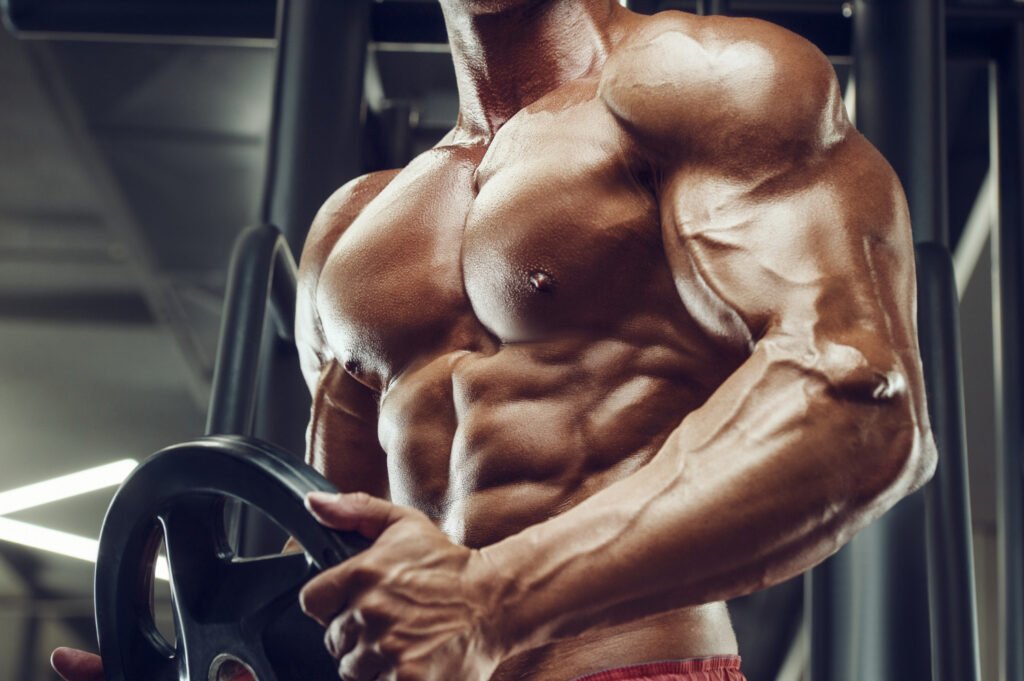
To achieve significant bicep peak growth, incorporating the recommended exercises is crucial for optimal results. These practical and efficient strategies emphasize proper exercise selection, grip width, and range of motion.
By strengthening the brachialis and focusing on supination of the wrist, one can expect to see a noticeable impact on bicep peak development. Exploring additional resources about muscle-building techniques can further enhance your understanding of effective workout programs.
Implementing these tips will not only lead to improved muscle strength but also contribute to achieving desired bicep peak growth goals.
FAQs
1. What exercises help grow bicep peaks?
To achieve bicep peak growth, focus on exercises like chin-ups, pull-ups, dumbbell curls, preacher bench curls, and close-grip barbell lifts. These target the muscle-building process in your biceps.
2. Why are chin-ups and pull-ups good for biceps?
Chin-ups and pull-ups work well because they engage your whole arm, especially the fast-twitch fibers in your biceps. This helps in building a stronger peak by working both the muscle’s strength and endurance.
3. Can weightlifting improve my bicep size?
Yes! Weightlifting exercises such as dumbbell curls and barbell lifts specifically target the bicep brachii through flexion and contraction movements. Adding these to your routine can significantly increase your muscle size.
4. How do I prevent injuries while doing these exercises?
Always warm up before starting any exercise routine to prepare your muscles. Focus on maintaining proper form during each exercise to avoid overstraining or incorrectly engaging muscles which could lead to tendon ruptures or other injuries.
5. Should I use supplements for better growth?
Incorporating sports nutrition like protein shakes or protein powders into your diet can support muscle recovery and growth when combined with regular targeted exercise routines for achieving peak bicep development.
6. How often should I train my biceps for optimal growth?
For best results, incorporate these exercises into your workout routine 2-3 times a week allowing rest days in between to avoid exhaustion and ensure muscles have time to recover properly for maximum growth.

Author
Years ago, the spark of my life’s passion ignited in my mind the moment I stepped into the local gym for the first time. The inaugural bead of perspiration, the initial endeavor, the very first surge of endorphins, and a sense of pride that washed over me post-workout marked the beginning of my deep-seated interest in strength sports, fitness, and sports nutrition. This very curiosity blossomed rapidly into a profound fascination, propelling me to earn a Master’s degree in Physical Education from the Academy of Physical Education in Krakow, followed by a Sports Manager diploma from the Jagiellonian University. My journey of growth led me to gain more specialized qualifications, such as being a certified personal trainer with a focus on sports dietetics, a lifeguard, and an instructor for wellness and corrective gymnastics. Theoretical knowledge paired seamlessly with practical experience, reinforcing my belief that the transformation of individuals under my guidance was also a reflection of my personal growth. This belief holds true even today. Each day, I strive to push the boundaries and explore new realms. These realms gently elevate me to greater heights. The unique combination of passion for my field and the continuous quest for growth fuels my drive to break new ground.

